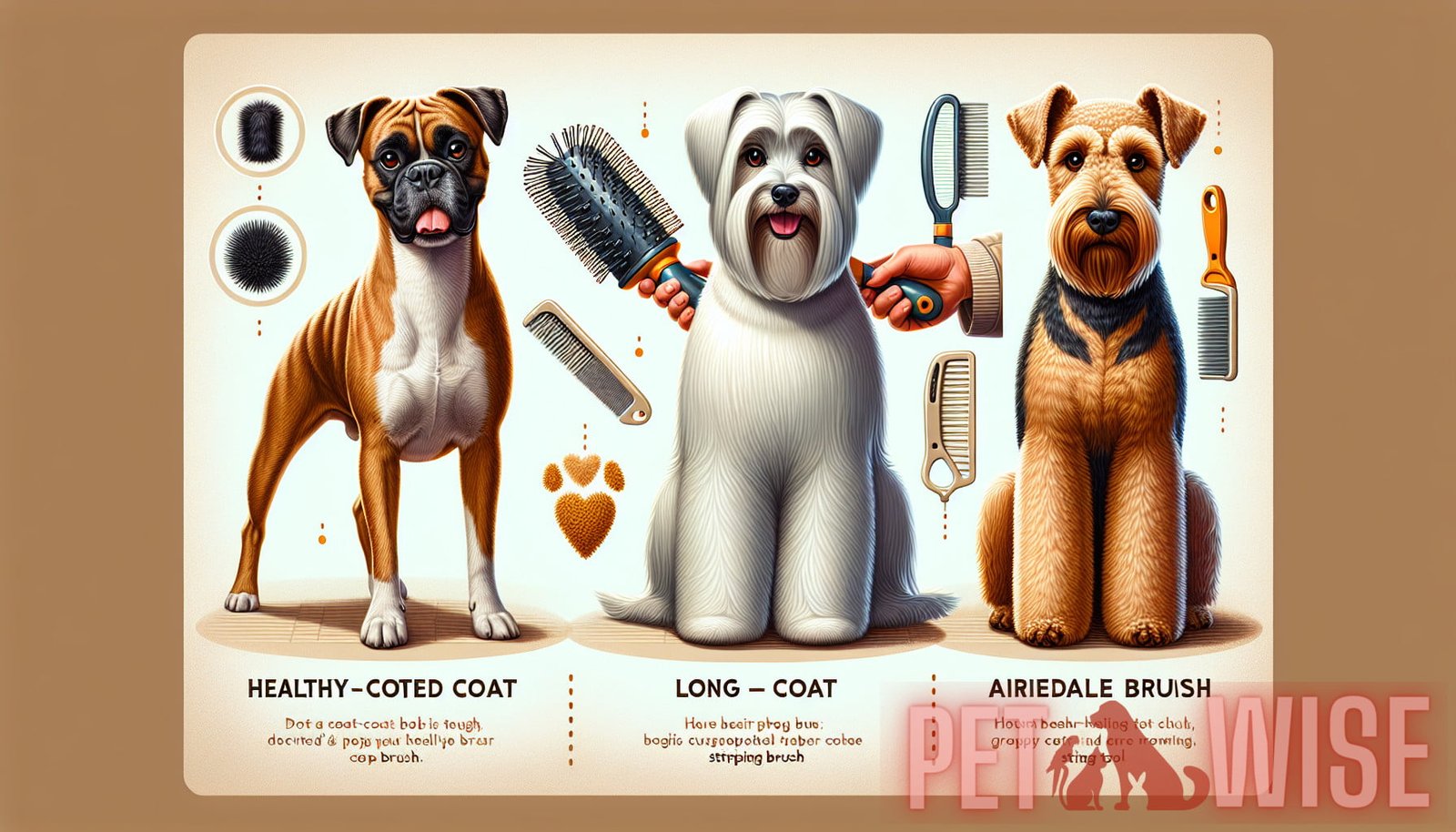Introduction
Grooming is an essential aspect of pet care, and maintaining a healthy coat is crucial for the overall well-being of our furry friends. However, the world of pet grooming can be a mystery with various techniques, products, and practices available. To demystify the process and provide a scientific approach to achieving optimal coat health, we delve into the intricacies of pet grooming.
The Science Behind Coat Care
Grooming your pet goes beyond just making them look good. It plays a vital role in maintaining the health of their coats. Here’s a scientific breakdown of why coat care is so important:
1. Coat Insulation: A pet’s coat provides insulation, helping to regulate their body temperature. Regular grooming ensures that the coat remains clean, free from matting, and well-maintained, allowing it to function optimally.
2. Skin Health: The health of a pet’s coat is closely linked to the health of their skin. Grooming helps remove dead skin cells, excess oil, and allergens that can accumulate on the skin’s surface. An unhealthy coat can lead to various skin issues, including dryness, itching, and even infections.
3. Shedding Management: Pets shed their fur regularly. Proper grooming techniques, such as brushing and combing, help manage shedding by removing loose hair, preventing it from accumulating around the house. This not only keeps your home cleaner but also reduces the chances of your pet ingesting excessive fur, which may lead to digestive problems.
4. Blood Circulation: Regular brushing and massaging during grooming stimulate blood circulation in your pet’s skin. Improved blood flow ensures the delivery of essential nutrients to the hair follicles, promoting healthy hair growth and an overall healthier coat.
5. Pest Prevention: Grooming allows you to closely inspect your pet’s coat, making it easier to spot fleas, ticks, or other pests. Early detection is crucial for effective treatment and prevention of infestations.
6. Bonding: When done correctly, grooming can be a bonding experience between you and your pet. Spending quality time together during grooming sessions helps strengthen the bond and fosters trust between both of you.
Choosing the Right Grooming Tools
To achieve optimal coat health, it is essential to invest in the right grooming tools. Here are some must-have tools for effective coat care:
- 1. Brushes: Different coat types require different brushes. Slicker brushes work well for removing mats and tangles, while bristle brushes are great for distributing natural oils and general maintenance. Look for brushes with soft and gentle bristles to ensure comfort during grooming sessions.
- 2. Combs: Combs are ideal for detangling hair, especially for pets with longer coats. Choose combs with wide and narrow teeth to accommodate various coat textures and thickness.
- 3. Nail Clippers: Proper nail care is crucial for your pet’s comfort and health. Invest in nail clippers specifically designed for pets to avoid accidents or injuries.
- 4. Shampoos and Conditioners: Use pet-friendly shampoos and conditioners that are specifically formulated for their coat type. Avoid using human products, as they can be too harsh and may irritate their skin.
- 5. Ear Cleaners: Regularly cleaning your pet’s ears helps prevent infections and keeps them comfortable. Look for ear cleaners made specifically for pets, as using harsh chemicals can be harmful to their delicate ears.
- 6. Trimmers and Clippers: If your pet has a coat that requires regular trimming or shaping, invest in high-quality trimmers and clippers. Opt for tools that are designed for pet use and have safety features to ensure that you don’t accidentally injure your pet.
The Role of Nutrition
Proper nutrition plays a significant role in maintaining a healthy coat for your pet. Here’s how diet affects coat health:
- 1. Essential Nutrients: A well-balanced diet provides the essential nutrients required for healthy hair growth. Nutrients such as proteins, fatty acids, vitamins, and minerals are crucial for maintaining a lustrous coat.
- 2. Omega-3 and Omega-6 Fatty Acids: Omega-3 and omega-6 fatty acids are essential for maintaining healthy skin and a shiny coat. These fatty acids have anti-inflammatory properties and help reduce itching and dryness.
- 3. Protein: Protein is the building block of hair. A diet rich in high-quality proteins promotes healthy hair growth and prevents hair loss or breakage.
- 4. Moisture Content: Proper hydration is essential to maintain skin and coat health. Make sure your pet has access to fresh water at all times to keep them hydrated.
Grooming Techniques for Different Coat Types

Different coat types require specific grooming techniques to keep them in optimal condition. Here’s a breakdown of the three main coat types and the care they require:
1. Short Coats
Pets with short coats can be easier to groom compared to pets with longer coats. However, they still require regular maintenance to keep their coats healthy. Here are some tips for grooming short-coated pets:
- Brushing: Use a soft-bristle brush or a grooming mitt to remove loose hair and distribute natural oils throughout the coat.
- Bathing: Follow a regular bathing routine to keep the coat clean. Use a shampoo formulated for short-coated pets and rinse thoroughly to remove any residue.
- Exfoliation: Use a gentle exfoliating glove or brush to remove dead skin cells and stimulate healthy hair growth.
- Nail Care: Regularly trim your pet’s nails to prevent them from becoming too long or causing discomfort.
2. Medium Coats
Pets with medium coats require more regular maintenance compared to short-coated pets. Here are some tips for grooming medium-coated pets:
- Brushing: Use a slicker brush or a combination brush with both bristles and pins to remove mats and tangles. Brush in the direction of hair growth to prevent discomfort.
- Combing: Use a wide-toothed comb to detangle the hair and remove any remaining loose hair.
- Bathing: Follow a regular bathing routine, using a shampoo and conditioner formulated for medium-coated pets. Rinse thoroughly to remove any product residue.
- Trimming: Regularly trim the hair around your pet’s eyes, paws, and sanitary areas to maintain cleanliness and prevent discomfort.
3. Long Coats
Pets with long coats require the most attention when it comes to grooming. Regular and thorough grooming is necessary to prevent matting and maintain a healthy coat. Here are some tips for grooming long-coated pets:
- Brushing: Use a slicker brush and a wide-toothed comb to remove mats and tangles. Start at the ends of the hair and work your way up to prevent causing discomfort.
- Untangling: For more stubborn tangles, use a detangling spray or conditioner to make removal easier.
- Bathing: Follow a regular bathing routine, using a shampoo and conditioner specifically formulated for long-coated pets. Rinse thoroughly to remove any product residue.
- Blow Drying: Use a pet-specific blow dryer on a low heat setting to dry the coat, ensuring all areas are thoroughly dry to prevent matting.
- Trimming: Regularly trim the hair around your pet’s feet, ears, and tail to maintain cleanliness and prevent discomfort.
Conclusion
Grooming your pet using a scientific approach is crucial for maintaining optimal coat health. Regular grooming not only keeps your pet looking good but also promotes healthy skin, prevents matting and shedding issues, and strengthens the bond between you and your furry friend. By understanding the science behind coat care, selecting the right grooming tools, and following proper techniques for each coat type, you can ensure your pet’s coat remains healthy, shiny, and beautiful for years to come. So, embrace the mysteries of pet grooming, armed with knowledge and a scientific approach, to unlock the secrets to achieving optimal coat health.


